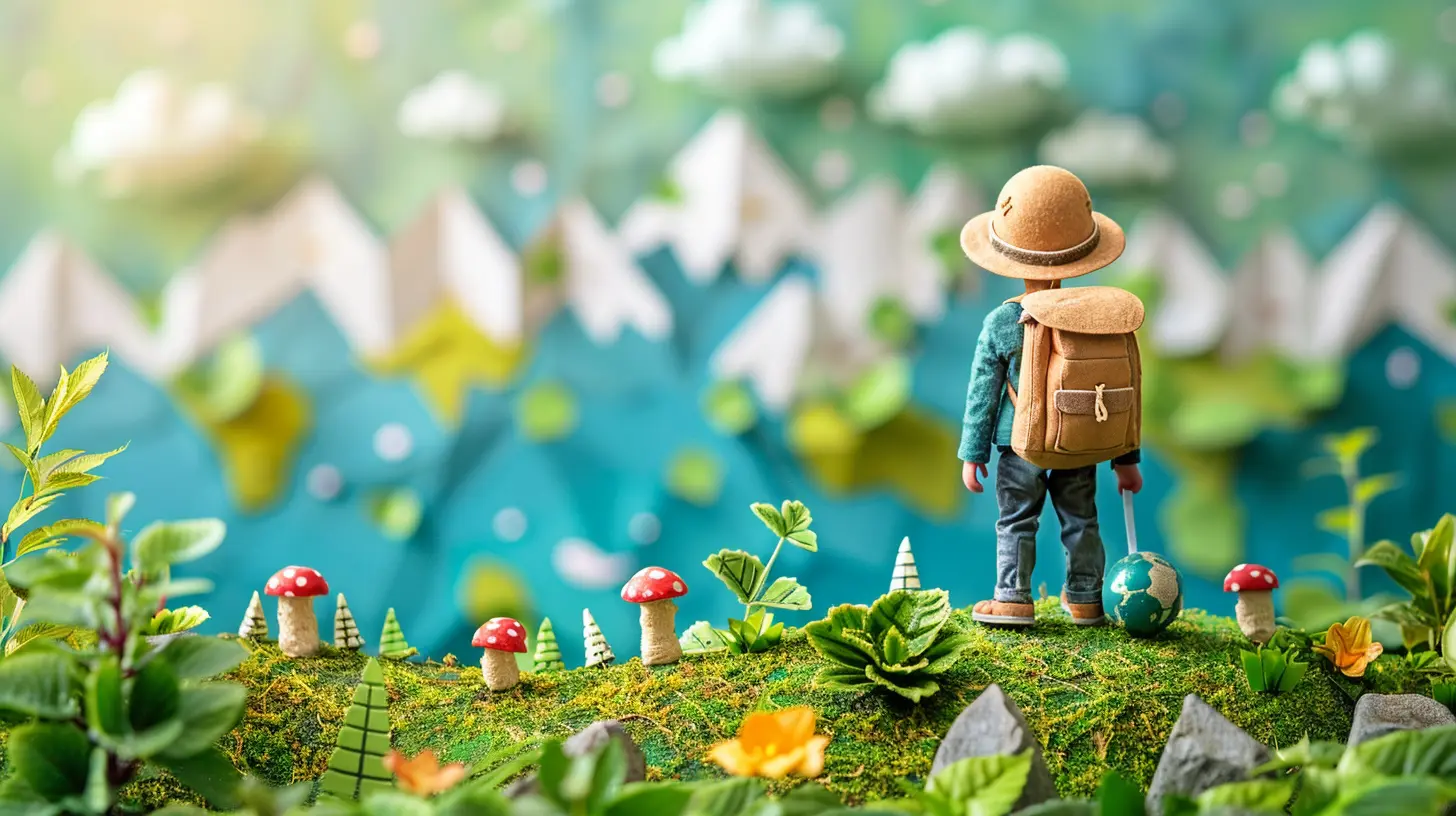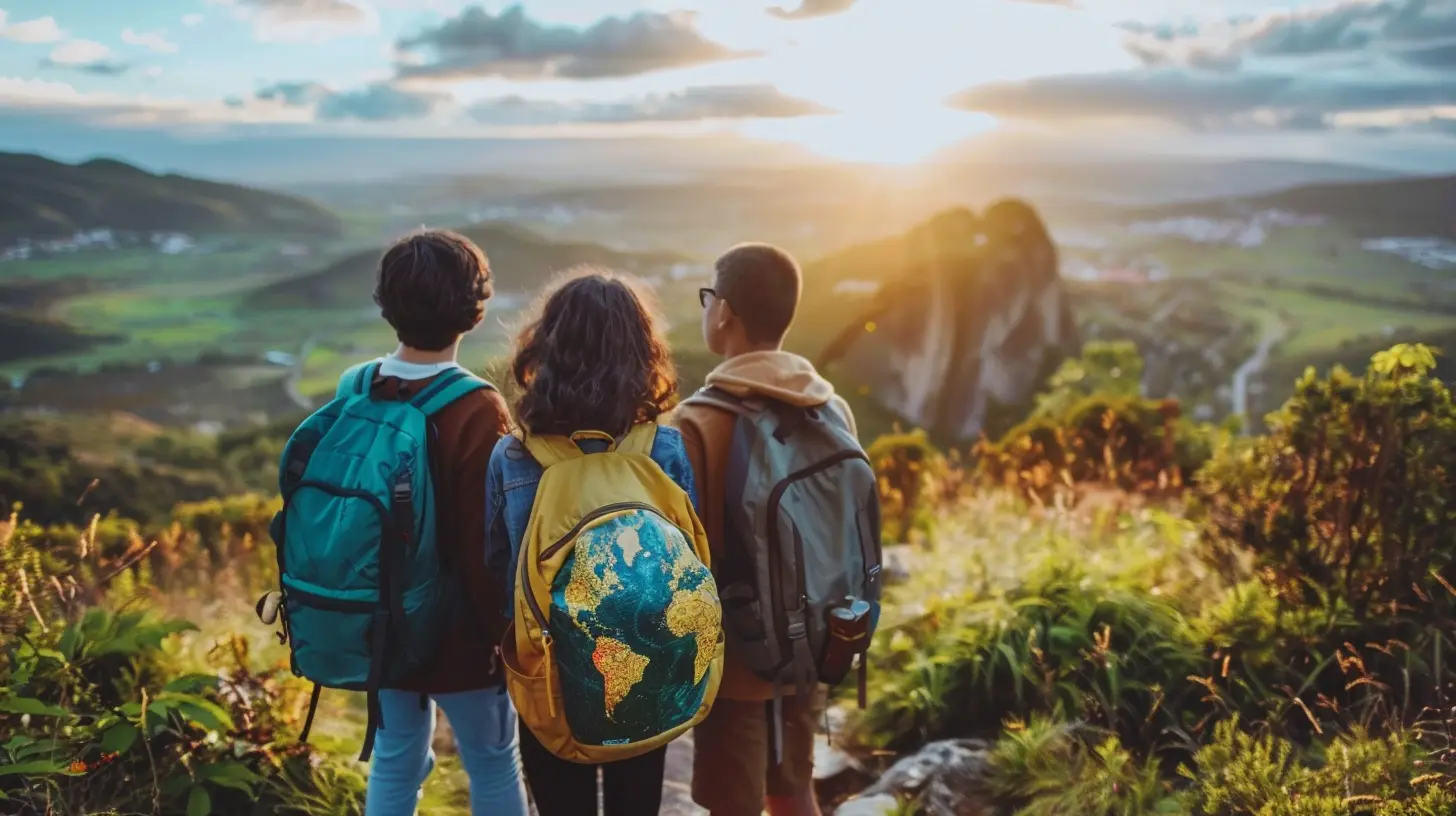How to Practice Sustainability as a Backpacker
4 December 2024
We all love traveling, right? There’s something about the thrill of discovering a new place, the excitement of getting lost in a foreign land, and that unbeatable sense of freedom. But here's the catch: as much as we adore the nomadic lifestyle, our travels can sometimes leave a not-so-pretty footprint on the environment. Now, the good news is that you don’t have to stop hopping from one scenic spot to another. Instead, the answer lies in making small, conscious choices—yes, we’re talking about sustainable backpacking!
In this article, we're diving into how to practice sustainability as a backpacker. So, grab your reusable water bottle, tighten the straps on your eco-friendly backpack, and let's hit the road sustainably!

What Is Sustainable Backpacking?
Before we delve into the how, let’s quickly cover the what. Sustainable backpacking is all about reducing your environmental and social impact while traveling. Think of it as traveling consciously, leaving a lighter footprint on the earth, and ensuring that your adventure supports local communities, instead of just taking from them.It’s not all about switching your plastic bottles to metal ones (although that's definitely a great start); it involves changing your mindset about travel and making deliberate choices that benefit both the planet and the people.
Sounds good? Alright, let’s jump into the ways you can make your adventures more sustainable.

1. Choose Eco-Friendly Gear
Invest in Sustainable Gear
First things first: the gear you use can make a huge difference. When buying your backpack, sleeping bag, and other items, look for brands with a clear commitment to sustainability. There are many companies out there creating high-quality products made from recycled or environmentally friendly materials. For example, backpacks made from repurposed plastic bottles. Cool, right?Go for Durability
Another point to consider is durability. Avoid the throwaway culture of fast fashion and instead, invest in gear that's built to last. Think of it like this: buying a cheap backpack that lasts a year or two might seem like a bargain at first, but if you keep replacing it every couple of years, not only does it hurt your wallet, but it also adds unnecessary waste to the environment.
2. Pack Light (Seriously, Less Is More!)
I get it—when you're packing for a long trip, it’s tempting to stuff everything in your bag “just in case.” However, packing light isn’t just good for your back, it's also good for the environment. How? Well, the more weight you're carrying, the heavier the transportation burden, especially if you’re flying. More weight equals more fuel, and we don’t need to remind you about how much pollution comes from air travel, right?By packing only what you need, you’re minimizing your travel footprint. Plus, trust me, less stuff equals more freedom. Do you really need five pairs of shoes for a backpacking trip?

3. Be Mindful of Transportation Choices
Walk or Cycle When You Can
When it comes to sustainable travel, it’s not rocket science: the less fuel-burning transportation you use, the better. Ditch the taxis and buses whenever possible and opt for walking or cycling. Not only is this better for the environment, but it's also an awesome way to immerse yourself in your surroundings. You’ll see more, connect more, and feel more. Plus, you’ll work up a sweat, so no need to hit the gym afterward!Consider Public Transport and Carpools
When long distances are inevitable, try to use public transportation or carpooling services. Trains and buses generally have a much lower carbon footprint than flying or driving solo in a rental car. Apps like BlaBlaCar make it easy to find rideshares, so don’t hesitate to hop in a car with others heading in the same direction. Sharing is caring!Avoid Flights When Possible
We know flying can sometimes be the only practical option, especially if you're traveling across continents. But whenever it's feasible—take a train, bus, or even a boat. Overland travel lets you save on emissions while experiencing the journey a bit slower and often more authentically.4. Stay in Eco-Friendly Accommodations
Support Eco-Lodges and Campsites
Not all accommodation is created equal. Many hostels, hotels, and guesthouses have started to offer eco-friendly options, whether it’s through energy-efficient design, waste reduction, or community-focused initiatives. When booking your stay, look for places with certifications such as LEED, Green Globe, or EarthCheck. Alternatively, try staying at eco-lodges or campgrounds which are often immersed in nature and run with sustainable practices at their core.Think About Homestays
Even better, consider staying with locals! Homestays are a fantastic way to support local communities and directly contribute to their livelihood. Plus, it’s often a more culturally enriching experience—like having a personal tour guide right in your living space. Airbnb also has sustainable travel options if you filter for eco-friendly stays.5. Minimize Waste
Reduce Single-Use Plastics
By now, we've all heard about how damaging single-use plastics are, right? When backpacking, it can be tempting to grab that bottled water, but there's a better way. Carry a reusable water bottle with a built-in filter (Lifestraw, anyone?). This way, you can fill up from streams or taps, even in places where the water isn’t safe to drink directly. As a bonus, you'll save money and reduce waste at the same time. Win-win!Use a Reusable Shopping Bag
In many countries, stores will offer plastic bags for your purchases. Don’t fall into that trap! Instead, carry a lightweight, foldable shopping bag in your backpack. They take up almost zero space and are a lifesaver when grabbing groceries or souvenirs.Say No to Straws and Utensils
Whether you're sipping on a coconut in Thailand or enjoying street food in Mexico, say "no thanks" to disposable straws, cups, and utensils. Opt for reusable bamboo or metal straws, and pack a set of portable utensils made of materials like bamboo or stainless steel.6. Be a Smart Camper
Respect Nature and Wildlife
If you’re hiking or camping, it's especially important to practice the "leave no trace" principle. This means packing out all your trash, avoiding disturbing wildlife, and sticking to designated trails to prevent damage to the ecosystem.While it's tempting to get up close and personal with wildlife for the perfect Instagram shot, keep your distance. Remember, we're visitors to these places. Respect their home as you would your own.
Choose Biodegradable Products
If you're likely to shower outside or wash dishes while camping, make sure you're using eco-friendly, biodegradable soap. Regular soaps and shampoos can pollute freshwater sources, harming animals and plants. Brands like Dr. Bronner’s offer great all-purpose soaps that won’t harm the environment.7. Eat and Shop Locally
Support Local Businesses
One of the most significant impacts you can have as a sustainable traveler is through the purchases you make. Instead of opting for multinational chains, support restaurants, stores, and markets run by locals. Not only does this boost the economy, but it also cuts down on the carbon footprint associated with shipping goods globally.Try Plant-Based Meals
I know, I know, this can be a tough one, especially for the meat lovers out there. But hear me out—reducing your meat consumption while traveling, even just a bit, can make a huge difference. The meat industry is one of the major contributors to greenhouse gases, deforestation, and water consumption. By opting for plant-based meals when you can, you're showing some serious love to the planet. And guess what? In many parts of the world, plant-based food is insanely delicious and a big part of the local culture. So, you're really just expanding your palate, not limiting it!8. Offset Your Carbon Footprint
Lastly, while it's nearly impossible to travel without any environmental impact, you can take steps to offset it. Many companies and organizations offer carbon offset programs where you can contribute to environmental projects that help reduce the amount of carbon in the atmosphere—think reforestation efforts or renewable energy projects. While this shouldn't replace direct efforts to reduce emissions, it's a great way to “balance the scales” when you do have to take a flight or use carbon-heavy transportation methods.Conclusion
Backpacking sustainably might sound like a tall order at first, especially when you're caught up in the excitement of exploring new places. But, as we've covered, it’s actually quite simple when you break it down. From choosing eco-friendly gear to being mindful about where you stay, what you eat, and how you get around, there's a lot you can do to make your adventures kinder to the planet.Traveling is as much about the journey as it is about the destination, and as backpackers, we have the unique opportunity to respect both the land and its people as we explore. So, let’s make sure that the only thing we leave behind is a trail of good vibes and fond memories.
Happy (sustainable) travels!
all images in this post were generated using AI tools
Category:
Sustainable TourismAuthor:

Tracie McAdams
Discussion
rate this article
10 comments
Parisa Williams
Love this! 🌍 Backpacking sustainably not only helps the planet but also leads to deeper connections with nature and locals. Every small effort counts—let's travel mindfully and make a positive impact together!
February 26, 2025 at 4:58 AM

Tracie McAdams
Thank you! I'm glad you resonate with the message. Every small step truly makes a difference in our travels and the world! 🌱
Onyx McQuillan
Backpacking sustainably? It’s like packing a sandwich: layer your eco-friendly choices like organic lettuce and a sprinkle of solar-powered mayo! From reusable utensils to eco-conscious campsites, every little effort counts. Remember, the planet’s our ultimate travel buddy—let’s not ghost it!" 🌍🎒✨
January 31, 2025 at 4:49 PM

Tracie McAdams
Absolutely! Every small choice adds up—let's make our adventures eco-friendly and keep our planet thriving! 🌿🌏
Arlo Taylor
Backpacking sustainably? It's easy! Just remember: leave no trace, pack out your snacks (and wrappers), and give local critters a break—no uninvited petting. Think of it as keeping nature on a low-carb diet while you go full-on buffet mode. Adventure awaits, but Mother Earth comes first!
January 22, 2025 at 5:35 PM

Tracie McAdams
Absolutely! Sustainable backpacking is all about respecting nature and minimizing our impact. Your tips are spot on—let's keep the trails and wildlife healthy while we enjoy our adventures!
Ember Cook
Leave only footprints, take only snacks—happy trails, eco-warriors!
January 18, 2025 at 4:33 AM

Tracie McAdams
Thanks for your fun take! Happy trails to you too, and let’s keep our planet beautiful! 🌍✨
Sophia Barlow
Absolutely love this! 🌍💚 Sustainable backpacking not only protects our planet but makes adventures even more meaningful. Happy trails, eco-warriors!
January 10, 2025 at 4:25 AM

Tracie McAdams
Thank you! I'm thrilled you enjoyed it. 🌿 Happy trails to you too!
Karen Love
Choose eco-friendly gear and minimize waste while traveling!
December 28, 2024 at 4:23 PM

Tracie McAdams
Absolutely! Eco-friendly gear and waste reduction are vital for sustainable travel. Every small choice makes a big impact!
Lennox Frank
Great tips on sustainable backpacking! Emphasizing local cultures and minimizing waste not only enhances experiences but also helps preserve beautiful destinations for future travelers.
December 18, 2024 at 5:56 AM

Tracie McAdams
Thank you! I'm glad you found the tips valuable. Embracing local cultures and reducing waste truly enriches our journeys while protecting our planet for future explorers. Happy travels!
Nyxaris McTigue
Backpacking sustainably? It’s like packing snacks for a long hike—every little bit helps! From using refillable water bottles to leaving no trace, every eco-friendly choice makes our planet a happier place. So go on, wander wisely and keep Mother Earth smiling! 🌍🎒
December 12, 2024 at 4:43 AM

Tracie McAdams
Absolutely! Every small action counts in sustainable backpacking. Together, we can make a big impact while exploring our beautiful planet. Happy trails! 🌿✨
Zevon Lewis
Traveling sustainably as a backpacker not only preserves nature but enriches your journey. Embrace local cultures, reduce waste, and tread lightly on the environment. Remember, every small action contributes to a healthier planet, ensuring that future generations can explore its beauty too.
December 4, 2024 at 6:00 PM

Tracie McAdams
Absolutely! Every mindful choice we make as backpackers not only protects our planet but enhances our travel experiences. Let's continue to cherish and respect the beautiful places we explore!
Valen Johnson
This article offers valuable insights into sustainable backpacking. I appreciate the emphasis on local engagement and minimizing waste. It's a reminder that our travel choices impact the environment and communities. Small actions—like using refillable bottles and supporting local businesses—can make a big difference. Let's travel mindfully!
December 4, 2024 at 3:59 AM

Tracie McAdams
Thank you for your thoughtful comment! I'm glad you found the insights valuable. Mindful travel truly makes a difference, and every small action counts. Happy backpacking!
MORE POSTS

Exploring Wildlife with the Whole Family: Safari and Zoo Adventures

Chase Adventure: Luxe Escapes for Thrill-Seekers

Under the Radar: Beach Destinations That Still Feel Untouched

Camping in All Seasons: What to Expect in Different Climates
Charmed by Shores: Iconic Island Getaways to Dream About

From Temples to Shrines: Sacred Spaces and Their Stories

Island Life 101: Embrace the Laid-Back Vibes of These Destinations